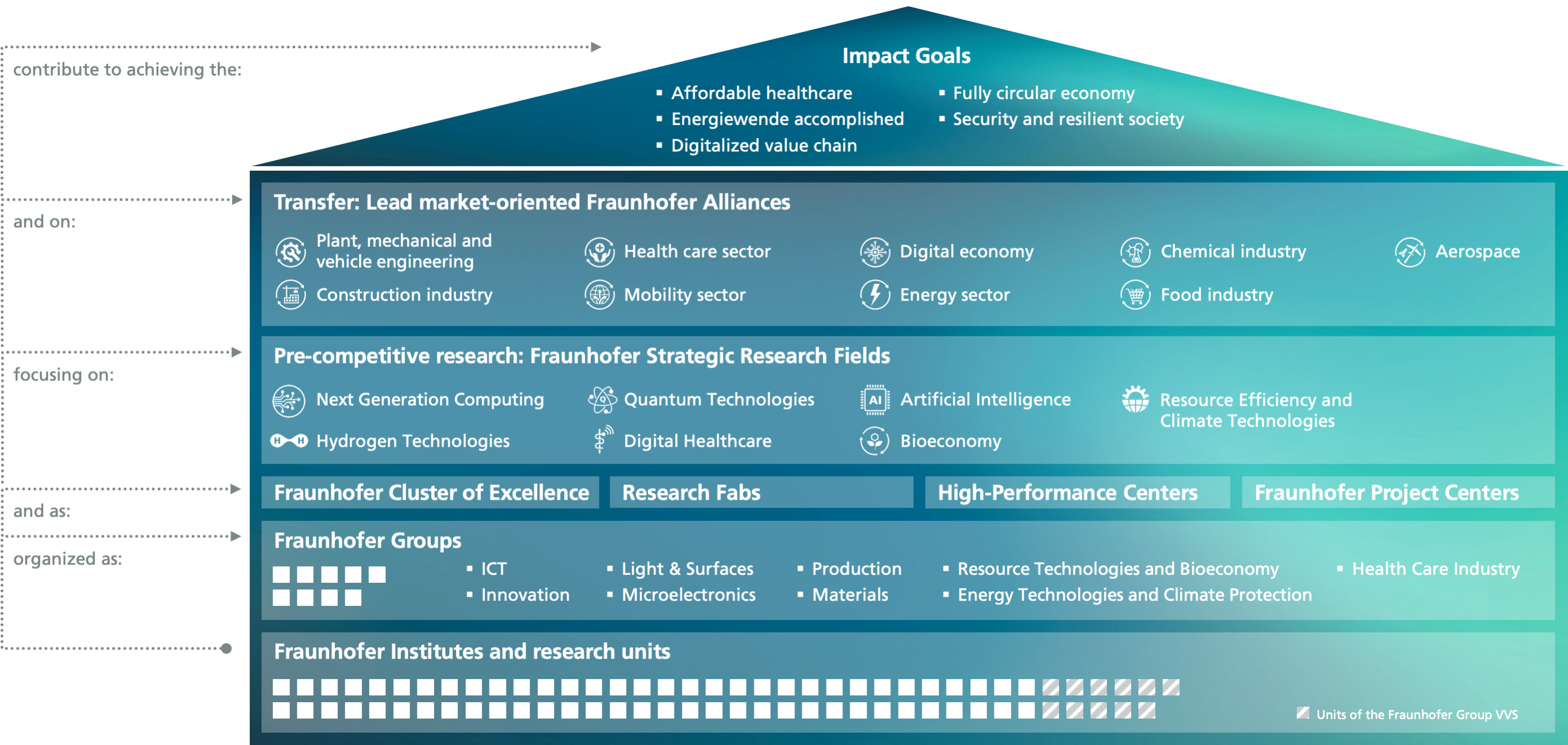A large network and smart minds are crucial for the success of projects. Our specific mathematical competences make Fraunhofer ITWM a sought-after and appreciated cooperation partner within Fraunhofer-Gesellschaft. The »Powerhouse« represents the organizational and funding structure of Fraunhofer-Gesellschaft. Below, we show how Fraunhofer ITWM is involved at all levels:
Fraunhofer Alliances
Institutes with related expertise organize themselves in research alliances and appear together on the R&D market. They play an active role in corporate policy as well as in the implementation of the functional and financial model of Fraunhofer-Gesellschaft. Fraunhofer ITWM is a member of the Alliance for:
- Information and Communication Technology – IUK
- Materials, Components – MATERIALS (guest status)
More about the network of Fraunhofer-Society
Fraunhofer Performance Centers
Performance centers organize the shoulder-to-shoulder cooperation of research with industry. Universities, colleges, Fraunhofer institutes and other non-university research institutes work together with companies and players in the civilian sector on specific topics at a single location in order to quickly transform innovations into applications. They stand for excellent infrastructure, training concepts and know-how that can be used across organizations. They bring together suitable partners and accompany ideas all the way to the market. Kaiserslautern is home to the »Simulation and Software-based Innovation« performance center, which is under ITWM management.
